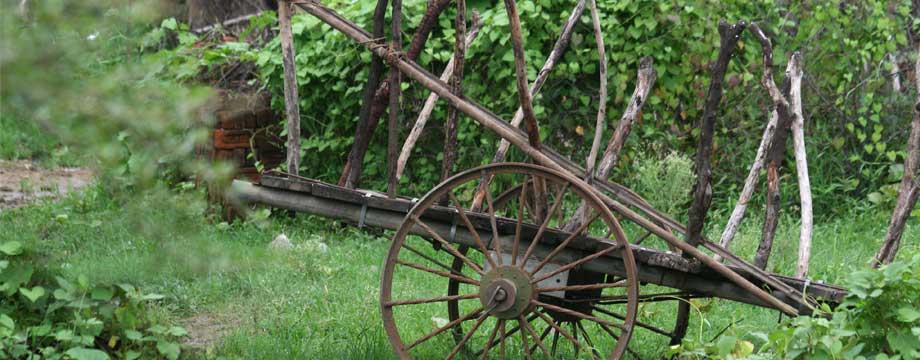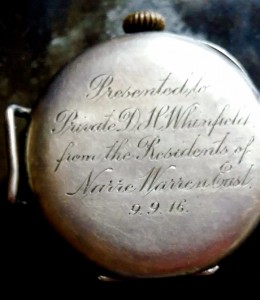The battle of the Somme took place between July and November of 1916 and was one of the bloodiest days in the history of recent wars. On the first day, the British and Allied forces lost 60,000 men. To put this in perspective, this equates to roughly the total population (including men, women and children) of the entire Casey-Cardinia region. That was on the first day. By the time the fighting was over there were approximately 500,000 German causualties, 420,000 British and Dominion and 200,000 French casualties. The total number of soldiers present has been estimated to be around 3 million. That is why the following article is so remarkable.
Published on Thursday, 27th of September 1917, in the South Bourke and Mornington Journal.
“By last mail, Mr. McCann received a letter from Sapper R. Munro, one of Berwick’s prominent footballers in pre-war days. In it, Sapper Munro relates how he happened to notice a watch one of his mates picked up on the Somme about three months previously. It was inscribed, ‘Presented to W.H. Whitefield by residents of Narre Warren East.’ Whitefield was the teacher at the Narre Warren East school, and had been presented with the watch prior to his leaving for the front. He had apparently lost it, but there will be a good chance of now having it returned to him.”
Despite exhaustive searching I can find no mention of Mr. W.H. Whitefield in the armed forces, within the Education Department records, on voting lists or in the Public Records Office of Victoria. I have discovered that a Mr. D. H. Whinfield was the head teacher at Narre Warren East P.S. and left there to join the war. It is probable that his name has been confused somewhere between the finding of the watch, the viewing of the watch, the writing of the letter and the relating of the story to the newspaper.
Private David Horace Whinfield enlisted in the Australian Imperial Forces on the 7th of August 1916. His occupation is listed as schoolteacher, his father is the next of kin and he hailed from a town called Macorna, Victoria (near Kerang). On the 10th of May 1918 Private D.H. Whinfield was awarded the Military Medal for Bravery. In April of 1918 he was a stretcher bearer involved in operations at Villers Bretonneux and despite heavy artillery and machine gun fire he continued to rescue, dress and carry wounded soldiers to aid stations with utter disregard to his own safety. David Whinfield returned to Victoria and became a farmer in Macorna alongside his father.
Sapper Robert Munro joined the war on the 11th of March 1916. At the time of embarkation he was 24 years old and his occupation was listed as quarryman. The term sapper simply means engineer and he was likely involved with bridge, road or airfield building etc. Robert returned from the war and by 1919 he was back in Berwick living on the Harkaway road with his wife Ettie and his occupation is listed as farmer. By 1924 he left the district and was living in Strathfieldsaye in the Bendigo area where he appears to have lived a full and rewarding life.
Recently I was contacted by the Lynn Allen, the granddaughter of David Whinfield, who is now the custodian of the very special watch. Lynn explained “Pa lost the watch in France but it was found by an English soldier. On his death all his belongings were returned to his family in England. In turn the family returned the watch to Australia which found its way back to pa. Lynn also alerted me to the fact that her grandfather kept a diary detailing his wartime experiences and this diary was quoted in the book “The Great War” by Les Carlyon. In many ways David Horace Whinfield was an average Australian. He was a schoolteacher, a farmer and a hero. What a special person to have in your family tree.
Relevant Needle in a Haystack Links


